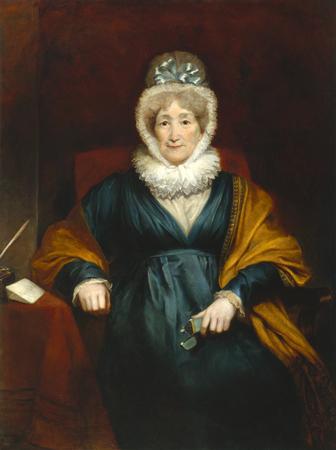Tarquin Tar’s
Bookcase is a non-partisan blog. I will, therefore, refrain here from
commenting in a partisan fashion on the apparent election of our nation’s first racist,
bigoted, misogynistic, homophobic, anti-Semitic, Islamaphobic, poor-bashing, First Amendment-hating,
veteran-taunting, disability-mocking, draft-dodging, nuclear war-mongering, alliance-wrecking, tax-shirking,
violence-promoting, anti-democracy, contractor-defrauding, small-business-wrecking,
dictator-loving, planet-killing, nativist, terrorist, narcissist, self-admitted sex offender, thug, serial liar, con-man, bankrupt, and man-child as
President.
This week’s book was chosen as a comment on the real, existential threat our country
faces from a President who openly colludes with, gives comfort to, and has received both financial aid and stolen state secrets from our adversaries and
enemies overseas -- particularly those in the Kremlin.
The son of a
prominent banker, James
Paul Warburg was born in Hamburg, Germany in 1896. After his family came to
the United States, Warburg graduate from Harvard and then joined the Navy
Flying Corps during WWI. After the War, he quickly rose the ranks through the
banking and financial services industry in New York City. In 1932, while
working for the Bank of the Manhattan Company, he was chosen by President
Franklin D. Roosevelt to serve as a financial adviser to the administration.
This relationship soured in 1934, however, when Warburg had a falling out with
Roosevelt over some parts of the New Deal.
In 1941, however, he returned to
government service, working with the Office of War Information to promote
American military intervention in Europe and to counter those arguing for
isolationism. After WWII, he was an advocate for nuclear disarmament and
diplomatic negotiation rather than military confrontation with the Soviet Union;
to this end, he joined the Council on Foreign Relations, and co-founded the
Institute for Policy Studies. He is perhaps best remembered for his February
17, 1950 testimony before the Senate Foreign Relations Committee, in which he
stated, “We shall have world government, whether or not we like it. The question
is only whether world government will be achieved by consent or by conquest.” He
was an adviser to John F. Kennedy and, for his efforts to prevent the Cold War
from becoming hot, he won the Gandhi Peace Award in 1963. After retiring to
Greenwich, Connecticut, Warburg died in 1969.
Warburg was a
prolific writer, bringing his political, economic, and diplomatic ideas to a
broad audience through his many books and pamphlets (including the pointedly
titled, 1949 Rearming Germany—How Stupid
Can We Be?). He also wrote politically and economically inspired verse (including
his, according to Kirkus Review, “vociferous”
and “declamatory”, 1942 anti-Nazi sonnet sequence Man’s Enemy and Man), as well as song lyrics for the 1929 hit song “Can’tWe Be Friends”, for his first wife, composer and musician Kay Swift, and for
their 1930 musical Fine and Dandy.
On February 29,
1952, Warburg’s twenty-fifth publication, How
To Co-Exist Without Playing the Kremlin’s Game: The 6 Imperatives of a Policy
of Liberation to Halt the Totalitarian Tide Without War, was published by
the Unitarian Universalist Church’s politically inclined Beacon Press, located at 25 Beacon Street in
Boston; there were no further editions. My copy of the book is a paperback,
14cm x 21cm, 228 pages. While there was only one edition of How to Co-Exist, the book was released
in three issues. The first, of which my copy is one, was a paperback “Special
Advance Edition” that included an inserted leaf promoting the book but which
is, otherwise, identical to the subsequent, hard-cover retail edition (sold for
$3). It was simultaneously published in pamphlet form by the Current Affairs
Press of New York City, sold for $1. The cover art (dust-jacket art on the red
cloth hard-cover issue) was by Boston calligrapher and artist Edward
A. Karr.
Warburg wanted
his book to start conversations and to that end, he included a “Discussion
Guide” as an appendix, aimed at helping readers bring up his ideas with their
friends, family, and neighbors. Intriguingly, the promotional insert indicates
that readers of the advance copy are welcome to “point out whatever flaws you
may find in the case presented, or make suggestions as to how the argument
might be made more persuasive” – which suggests that Warburg was open to
revising the book at some point (or, alternatively, the invitation may have
simply been a marketing scheme to make the advance readers feel that their
views were being considered). The insert also asks advance readers to provide
the names of others who might be interested in copies, to buy additional copies
to distribute or buy them in bulk for groups or organizations, to pay for their
advance copy (to make it possible “to increase the free distribution to key
citizens”), and simply to talk-up the book with others.
How to Co-Exist advocates for a concerted effort to
reform both domestic and foreign policy in order to combat communism through
economic, cultural, and social means, rather than explicitly military means. Warburg’s
principle argument centers on the assumption that a war with the Soviet Union
or its satellites would be not winnable, in that the use of nuclear weapons would
necessarily result in the end of humanity. For victory, Warburg contends that
an aggressive campaign of global education is required, that America needs to
demonstrate to other countries the best qualities of American values of liberty,
free market capitalism, racial justice, universal civil rights, and
egalitarianism. He sounds a warning against ignorance (especially ignorance of
communism and what it actually is), saber-rattling, and any government actions
that might undermine absolute confidence in the transparency and fairness of a
free state. Ultimately, Warburg believes that “if we can gain time without
permitting the outbreak of a major armed conflict, a way can and must be found
to wipe the curse of war from the face of this long-suffering earth” (p. 8).
I’d send my copy to the White House, gratis, but I doubt it would be of much use there.
















